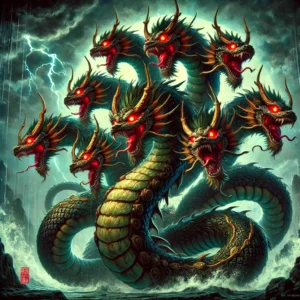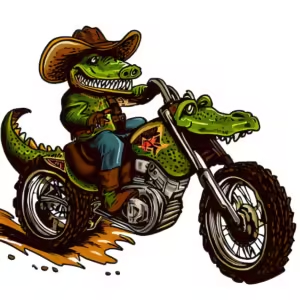Drawing:1enzi6g2cvg= fox: Mastering Techniques for Stunning Fox Art
Foxes, with their majestic tails and cunning expressions, have always captivated the hearts of animal lovers, nature enthusiasts, and wildlife photographers. Their presence in folklore, literature, and even modern media makes them a fascinating subject for artists. If you’re one of those who find joy in capturing the essence of these elegant creatures on paper, you’re in the right place. In this blog post, we’ll explore the art of drawing foxes, providing you with practical tips, techniques, and insights to enhance your skills. Whether you’re a beginner or an experienced artist, you’ll find valuable information that can help you create stunning fox drawings.
Why Drawing Foxes is so Popular
Foxes are not just any animals; they are symbols of intelligence, adaptability, and mystery. This makes them incredibly popular subjects for artists. When you start drawing foxes, you tap into a rich tradition of storytelling and symbolism. The keyword “drawing:1enzi6g2cvg= fox” might seem like a technical term, but it actually represents a growing interest in the specific techniques used to depict these creatures. Artists and art enthusiasts alike search for resources that can help them capture the unique features of foxes, making this a highly relevant topic.
Another reason why drawing foxes is so popular is the challenge it presents. Foxes have distinctive physical features that require a keen eye for detail and a steady hand. From their pointed ears to their bushy tails, every part of a fox offers an opportunity to hone your artistic skills. The keyword “drawing:1enzi6g2cvg= fox” is often associated with tutorials and guides that focus on these specific challenges, providing artists with the tools they need to succeed.
Lastly, drawing foxes allows artists to connect with nature in a meaningful way. For nature enthusiasts and wildlife photographers, capturing the essence of a fox on paper can be a fulfilling experience. It allows them to express their appreciation for these beautiful creatures and share that appreciation with others. The keyword “drawing:1enzi6g2cvg= fox” often leads to communities of like-minded individuals who share tips, techniques, and feedback, making it a rewarding endeavor for anyone involved.
The Anatomy of a Fox
Understanding the anatomy of a fox is crucial for any artist aiming to create realistic and captivating drawings. Foxes have a unique skeletal and muscular structure that sets them apart from other animals. The keyword “drawing:1enzi6g2cvg= fox” often appears in resources that provide detailed anatomical studies, helping artists to understand the underlying structure of these creatures.
Foxes have elongated bodies, sharp snouts, and large, bushy tails. Their legs are relatively short, but they are agile and capable of quick, nimble movements. When you’re drawing a fox, it’s essential to pay attention to these details. The keyword “drawing:1enzi6g2cvg= fox” can guide you to anatomical charts and resources that break down each part of the fox’s body, making it easier to capture their likeness accurately.
In addition to their physical structure, foxes have distinctive fur patterns and coloration. Their coats can range from deep reds to snowy whites, depending on the species and season. Understanding these variations is crucial for adding depth and realism to your drawings. The keyword “drawing:1enzi6g2cvg= fox” is often used in tutorials that focus on capturing these subtle differences, providing artists with the knowledge they need to bring their drawings to life.
Tools and Materials You Need
Before you start drawing foxes, it’s essential to gather the right tools and materials. Having the appropriate supplies can make a significant difference in the quality of your work. The keyword “drawing:1enzi6g2cvg= fox” is frequently associated with recommendations for tools and materials that are specifically suited for drawing these creatures.
One of the most important tools you’ll need is a set of high-quality pencils. Different grades of pencils can help you achieve a range of tones and textures in your drawings. For example, softer pencils (B grades) are excellent for creating dark, rich lines, while harder pencils (H grades) are better for fine details. The keyword “drawing:1enzi6g2cvg= fox” can lead you to reviews and comparisons of various pencil sets, helping you choose the best ones for your needs.
In addition to pencils, you’ll need a good eraser. Kneaded erasers are particularly useful for drawing because they can be shaped to lift out fine details without smudging the surrounding areas. A high-quality sketchbook made of acid-free paper can also make a significant difference. The keyword “drawing:1enzi6g2cvg= fox” often appears in guides that recommend sketchbooks with the right texture and thickness for pencil work.
Lastly, consider investing in some shading tools, such as blending stumps or tortillons. These tools can help you achieve smooth, gradient shading, which is crucial for capturing the texture of a fox’s fur. The keyword “drawing:1enzi6g2cvg= fox” is often used in tutorials that teach shading techniques, providing you with valuable insights into how to use these tools effectively.
Choosing the Right Reference Images
Reference images are invaluable when it comes to drawing realistic foxes. They provide you with a visual guide to the fox’s anatomy, fur patterns, and coloration. The keyword “drawing:1enzi6g2cvg= fox” often leads to collections of high-quality reference images that can serve as a starting point for your drawings.
When choosing reference images, look for high-resolution photos that capture the fox from multiple angles. This will give you a better understanding of its three-dimensional form. The keyword “drawing:1enzi6g2cvg= fox” can guide you to websites and databases that offer a wide range of reference images, ensuring that you have plenty of options to choose from.
It’s also helpful to select reference images that show the fox in different poses and lighting conditions. This will allow you to study how the fur reacts to light and shadow, which is crucial for creating realistic drawings. The keyword “drawing:1enzi6g2cvg= fox” is often used in resources that provide tips on how to analyze and use reference images effectively.
Lastly, don’t be afraid to use multiple reference images for a single drawing. Combining elements from different photos can help you create a more dynamic and interesting composition. The keyword “drawing:1enzi6g2cvg= fox” is frequently found in guides that teach artists how to blend multiple references seamlessly, providing you with the skills you need to create stunning artwork.
Basic Sketching Techniques
Before you start adding details to your fox drawings, it’s essential to master basic sketching techniques. These foundational skills will provide you with a solid base upon which to build your artwork. The keyword “drawing:1enzi6g2cvg= fox” often appears in tutorials that focus on these essential techniques, helping you develop your skills from the ground up.
One of the most important techniques to master is gesture drawing. Gesture drawings are quick, loose sketches that capture the overall movement and posture of the fox. These sketches are not about details but about capturing the essence of the pose. The keyword “drawing:1enzi6g2cvg= fox” can guide you to exercises that help you practice gesture drawing, improving your ability to capture dynamic poses.
Another crucial technique is contour drawing. Contour drawings focus on the outlines and edges of the fox, helping you define its shape and structure. This technique can be particularly useful for capturing the unique features of a fox, such as its pointed ears and bushy tail. The keyword “drawing:1enzi6g2cvg= fox” is often found in tutorials that teach contour drawing, providing you with step-by-step instructions to follow.
Lastly, practice constructing basic shapes. Foxes can be broken down into simple geometric forms, such as circles, ovals, and triangles. By mastering these basic shapes, you’ll find it easier to construct accurate and proportionate drawings. The keyword “drawing:1enzi6g2cvg= fox” often appears in guides that teach how to break down complex subjects into simpler forms, making it easier to capture their likeness.
Adding Details and Textures
Once you’ve mastered basic sketching techniques, it’s time to start adding details and textures to your fox drawings. This is where your artwork really begins to come to life. The keyword “drawing:1enzi6g2cvg= fox” is frequently associated with tutorials that focus on these advanced techniques, providing you with the guidance you need to take your drawings to the next level.
One of the most important aspects of adding details is capturing the texture of the fox’s fur. Foxes have a variety of fur textures, from the soft, fluffy fur on their bodies to the coarser hair on their tails. To capture these textures, use a combination of light and dark lines, as well as varying pressure on your pencil. The keyword “drawing:1enzi6g2cvg= fox” can guide you to tutorials that teach fur rendering techniques, helping you achieve realistic results.
In addition to fur, pay attention to the details of the fox’s facial features. Foxes have expressive eyes, sharp noses, and pointed ears, all of which contribute to their distinctive appearance. The keyword “drawing:1enzi6g2cvg= fox” often appears in guides that focus on drawing these specific features, providing you with step-by-step instructions to follow.
Lastly, don’t forget to add shading to your drawings. Shading can help you create depth and dimension, making your fox appear more three-dimensional. Use a combination of hatching, cross-hatching, and blending techniques to achieve smooth, gradient shading. The keyword “drawing:1enzi6g2cvg= fox” is frequently found in tutorials that teach shading techniques, providing you with valuable insights into how to use these methods effectively.
Capturing the Fox’s Expression
Foxes are known for their cunning and intelligent expressions, which can be challenging to capture in a drawing. However, with the right techniques, you can convey these emotions effectively. The keyword “drawing:1enzi6g2cvg= fox” is often associated with resources that focus on capturing the fox’s expression, providing you with the guidance you need to succeed.
One of the most important aspects of capturing a fox’s expression is the eyes. Foxes have large, expressive eyes that convey a range of emotions, from curiosity to cunning. Pay close attention to the shape and position of the eyes, as well as the highlights and reflections within them. The keyword “drawing:1enzi6g2cvg= fox” can guide you to tutorials that focus on drawing expressive eyes, helping you achieve realistic results.
In addition to the eyes, the positioning of the ears can also convey a fox’s mood. Foxes move their ears to express curiosity, alertness, and even aggression. By adjusting the angle and position of the ears in your drawing, you can enhance the overall expression. The keyword “drawing:1enzi6g2cvg= fox” often appears in guides that teach how to capture these subtle changes, providing you with valuable insights.
Lastly, consider the mouth and nose. A fox’s mouth can convey a range of emotions, from a relaxed, closed mouth to a snarling, open one. Pay attention to the shape and position of the mouth and nose, as well as the tension in the surrounding muscles. The keyword “drawing:1enzi6g2cvg= fox” is frequently found in tutorials that focus on these features, providing you with step-by-step instructions to follow.
Using Color to Enhance Your Drawings
Adding color to your fox drawings can bring them to life and add a new level of depth and realism. The keyword “drawing:1enzi6g2cvg= fox” is often associated with resources that focus on color techniques, providing you with the guidance you need to achieve stunning results.
One of the most important aspects of using color is understanding the color palette of foxes. Foxes come in a variety of colors, from the classic red fox to the arctic fox with its white fur. Study reference images to understand the range of colors and how they transition across the fox’s body. The keyword “drawing:1enzi6g2cvg= fox” can guide you to resources that provide color palettes and tips for achieving realistic results.
In addition to understanding the color palette, pay attention to the direction and flow of the fur. Use your colored pencils or paints to mimic the natural movement of the fur, following the contours of the fox’s body. This will help you achieve a more realistic and dynamic appearance. The keyword “drawing:1enzi6g2cvg= fox” is frequently found in tutorials that teach these techniques, providing you with valuable insights.
Lastly, consider the lighting and shadows in your drawing. Adding highlights and shadows can enhance the three-dimensionality of your fox, making it appear more lifelike. Use lighter colors for highlights and darker colors for shadows, blending them smoothly to create a gradient effect. The keyword “drawing:1enzi6g2cvg= fox” often appears in guides that focus on shading and highlighting techniques, providing you with the knowledge you need to succeed.
Practicing Different Poses
Drawing a fox in different poses can help you develop a deeper understanding of its anatomy and movement. This practice can also add variety and interest to your artwork. The keyword “drawing:1enzi6g2cvg= fox” is often associated with resources that provide pose references and tips for capturing dynamic positions.
Start by practicing basic poses, such as a fox sitting or standing. Focus on capturing the overall structure and proportions of the fox in each pose. The keyword “drawing:1enzi6g2cvg= fox” can guide you to reference images and tutorials that provide step-by-step instructions for these basic poses.
Once you’re comfortable with basic poses, challenge yourself with more dynamic positions. Draw a fox running, jumping, or playing. These poses can be more challenging but will help you develop a deeper understanding of the fox’s movement and flexibility. The keyword “drawing:1enzi6g2cvg= fox” is frequently found in resources that provide tips and techniques for capturing these dynamic poses.
Lastly, don’t be afraid to experiment with different angles and perspectives. Drawing a fox from various viewpoints can add interest and variety to your artwork. Practice drawing the fox from the front, side, and back, as well as from above and below. The keyword “drawing:1enzi6g2cvg= fox” often appears in guides that teach perspective drawing, providing you with valuable insights into capturing different angles.
Incorporating Backgrounds and Environments
Adding a background or environment to your fox drawing can enhance the overall composition and tell a more complete story. The keyword “drawing:1enzi6g2cvg= fox” is often associated with resources that focus on creating backgrounds, providing you with the guidance you need to achieve stunning results.
Start by considering the natural habitat of the fox. Foxes can be found in a variety of environments, from forests and meadows to urban areas. Choose a background that complements the pose and expression of your fox. The keyword “drawing:1enzi6g2cvg= fox” can guide you to reference images and tutorials that provide ideas and tips for creating these environments.
In addition to considering the habitat, pay attention to the composition and balance of your drawing. Ensure that the background elements do not overpower the fox but instead enhance the overall composition. Use techniques such as leading lines, focal points, and negative space to create a balanced and pleasing composition. The keyword “drawing:1enzi6g2cvg= fox” is frequently found in guides that teach composition techniques, providing you with valuable insights.
Lastly, consider adding details that enhance the storytelling aspect of your drawing. Include elements such as trees, rocks, and other animals to create a more immersive and engaging scene. Pay attention to the interaction between the fox and its environment, ensuring that they complement each other. The keyword “drawing:1enzi6g2cvg= fox” often appears in resources that focus on storytelling through art, providing you with the knowledge you need to create compelling compositions.
Digital vs. Traditional Drawing
When it comes to drawing foxes, artists have the option of using traditional or digital mediums. Each has its own set of advantages and challenges, and the choice ultimately depends on personal preference and artistic goals. The keyword “drawing:1enzi6g2cvg= fox” is often associated with resources that compare these mediums, providing you with the guidance you need to make an informed decision.
Traditional drawing involves using physical tools such as pencils, pens, and paper. This medium allows for a tactile and hands-on experience, which many artists find satisfying. However, traditional drawing can be less forgiving, as mistakes are harder to correct. The keyword “drawing:1enzi6g2cvg= fox” can guide you to tutorials and tips for traditional drawing techniques, helping you achieve the best results.
Digital drawing, on the other hand, involves using software and digital tools such as tablets and styluses. This medium offers a range of advantages, including the ability to easily correct mistakes, experiment with different brushes and textures, and create layers. However, digital drawing can have a steeper learning curve for those unfamiliar with the software. The keyword “drawing:1enzi6g2cvg= fox” is frequently found in resources that provide tutorials and tips for digital drawing, helping you master this medium.
Ultimately, the choice between traditional and digital drawing depends on your personal preferences and artistic goals. Many artists use a combination of both mediums, taking advantage of the unique benefits each offers. The keyword “drawing:1enzi6g2cvg= fox” often appears in guides that teach hybrid techniques, providing you with valuable insights into combining traditional and digital methods.
Showcasing Your Artwork
Once you’ve created stunning fox drawings, it’s time to showcase your artwork to the world. Sharing your work can be a rewarding experience and can help you connect with other artists and art enthusiasts. The keyword “drawing:1enzi6g2cvg= fox” is often associated with resources that provide tips and techniques for showcasing your art, helping you present your work in the best possible light.
One of the most popular ways to showcase your artwork is through social media platforms such as Instagram, Facebook, and Twitter. Create a portfolio or dedicated art account to share your drawings with a wider audience. Use relevant hashtags and keywords, such as “drawing:1enzi6g2cvg= fox,” to reach art communities and potential followers. Engage with your audience by responding to comments and participating in art challenges and collaborations.
In addition to social media, consider creating an online portfolio or website to showcase your work. This can serve as a professional platform to display your drawings, share your artistic process, and provide contact information for potential clients or collaborators. The keyword “drawing:1enzi6g2cvg= fox” can guide you to resources that provide tips for creating an online portfolio, helping you present your work professionally.
Lastly, don’t underestimate the power of local art communities and events. Participate in art shows, exhibitions, and workshops to showcase your drawings and connect with other artists. Join local art groups and organizations to stay informed about upcoming events and opportunities. The keyword “drawing:1enzi6g2cvg= fox” is frequently found in resources that provide tips for participating in local art communities, helping you make the most of these opportunities.
Conclusion
Drawing foxes is a rewarding and fulfilling artistic endeavor that allows you to connect with nature, hone your skills, and create stunning artwork. Whether you’re an animal lover, nature enthusiast, or wildlife photographer, capturing the essence of these elegant creatures on paper can be a deeply satisfying experience. By following the tips and techniques outlined in this blog post, you can master the art of drawing foxes and create beautiful, realistic drawings.
Remember to start with the basics, study their anatomy and behavior, and consider the habitat and composition of your drawing. Experiment with different mediums and techniques to find what works best for you, and don’t be afraid to add personal touches that enhance the storytelling aspect of your artwork. Finally, showcase your drawings through social media, online portfolios, and local art communities to share your talent with the world. As always, keep practicing and never stop learning – let the keyword “drawing:1enzi6g2cvg= fox” continue to guide you in your artistic journey. Happy drawing!














Post Comment